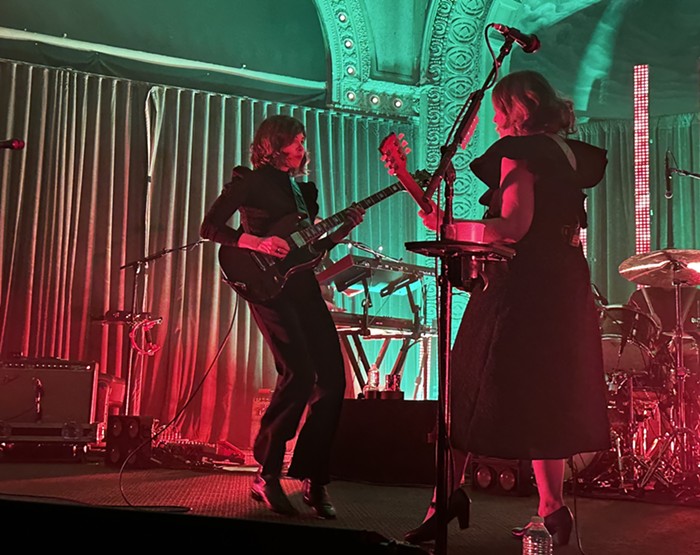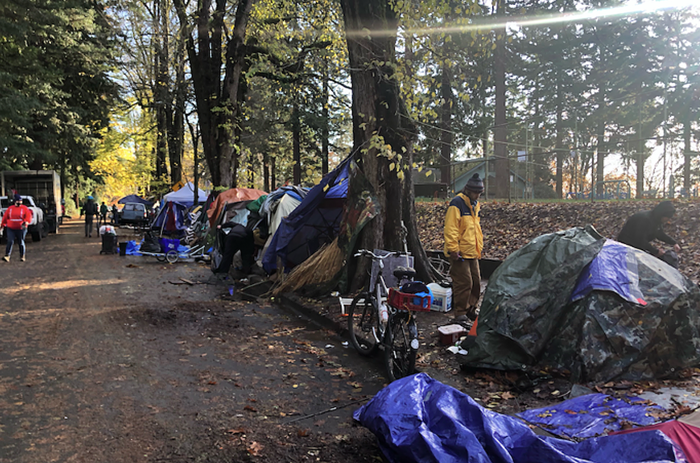REGARDLESS OF HOW or why they started, referring to Portland's Black Prairie as a side project has now become disrespectful. Not to the band members, mind you, but to the diverse music the five-piece group has assembled for its second full-length, A Tear in the Eye Is a Wound in the Heart. For the band, how you choose to categorize their working status—especially in relation to the Decemberists, in which three Black Prairie members are players— is negotiable.
Black Prairie, however, don't find themselves feeling like much of a side of anything.
"When some members are in a more successful band, it gets termed that way," says multi-instrumentalist Chris Funk. "You bow down to your more successful or longer-standing project. In terms of how we cut up our time in the month, it certainly doesn't feel like a side project."
A Tear in the Eye is testament to this. With eight of the album's 16 cuts including vocals, and the other eight dallying in Euro-folk, classic Americana, and ghostly string sonatas, the collaborative nature of Black Prairie doesn't speak in stutters and doesn't settle for pigeonholing.
"We opened everything up," explains Funk. "I think we looked at what it meant to be a pure string band—plus accordion, in our situation—and said, 'Well, we did that.'"
Opening everything up included utilizing vocals and drums for the first time. For a band that during its inception adhered to a set of aesthetic parameters (no vocals, no drums, only acoustic instruments), the heavier dose of vocalist/fiddler Annalisa Tornfelt's sultry serenades might seem a betrayal—if her vocals weren't so great. With such a talented band, it was only a matter of time before they decided to break their own rules.
"When we started, we said, 'Let's make this a strict acoustic folk band,' which was a reaction to some of us being Decemberists," Funk laughs. "But now I look at our stage inputs for the fall and it's just like the Decemberists."
Far be it for a group with such worldly musical palates, however, to stop at the mere inclusion of vocals and drums to grow into themselves. A Tear in the Eye marches out Romani folk in the form of "Taraf," an homage of sorts to the Romani catalog of Taraf de Haïdouks; later, "34 Wishes: The Legend Of" espouses a darkly intricate string-and-accordion arrangement that glitters with violin crescendos and lots of lead. Inspiration for this tune came in the form of Funk and guitarist Jon Neufeld lifting Mastodon riffs and reimagining metal songs for acoustic instruments.
"Dirty River Stomp," a Joplin-esque ragtime piano piece, was brought in by accordionist Jenny Conlee-Drizos around the time the band was also writing the score for the Oregon Children's Theatre's spring production of The Storm in the Barn. The emotive imagery required for a stage play proved a beneficial distraction for the band.
"When Jenny brought us 'Dirty River Stomp,' we were neck-deep in the middle of making weirder music for The Storm in the Barn, so that middle section [of A Tear in the Eye] gets pretty out there."
Considering their lofty ambitions, the band's next goal shouldn't be all that surprising.
"Our next adventure is we want to do a laser light show at OMSI," says Funk. "They already said yes."



















